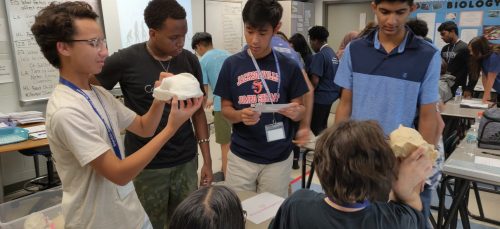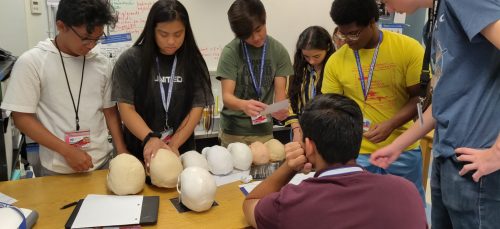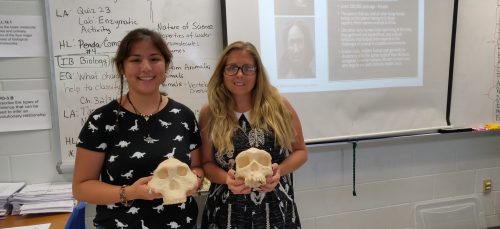Teacher, Gigi Hornilla from Stanton College Preparatory High School in Duval County gave her students a day they won’t soon forget. Although, SEFS is not actively targeting schools in Duval County; it was through Hornilla’s participation in the summer program, that she was able to secure a classroom visit with scientist Molly Selba.


In order to provide hands on exploration for the biology students, the scientist brought large bins filled with 3D printed hominid crania. The lab exercise asked students to critically think and collaborate in effort to master Florida Standard SC.912.L.15.10. The standard specifically targeted the students’ ability to identify basic trends in hominid evolution from early ancestors six million years ago to modern humans. This included making comparative anatomical observations regarding brain size and jaw size, as well as other morphological features. Selba was able to further provide students with enriching details and current research regarding hominid evolution that can’t be found in any textbooks.
Highlights from the day included: discussing how Homo naledi fossils got into the Dinaledi Cave System and attempting to identify several mystery fossil fragments.
Not only did the students gain positive benefits from the experience with Scientist in Every Florida School, but the scientist also benefited. According to visiting scientist, Molly Selba, “Getting to visit with K-12 students and talk to them about the things that you are passionate about is extremely rewarding. They are very curious and often ask questions that can bring a new viewpoint to your research. Not only is it beneficial to practice effective science communication skills, but it also demonstrates for the students that scientists are more than just inaccessible researchers in white lab coats– we talk about our mutual love of dogs, what college is like, and even laugh about funny fieldwork fails. Getting the opportunity to talk one-on-one with a scientist can be the defining moment that encourages a student to go into the sciences and can be a memory that they reflect on in years to come.”
